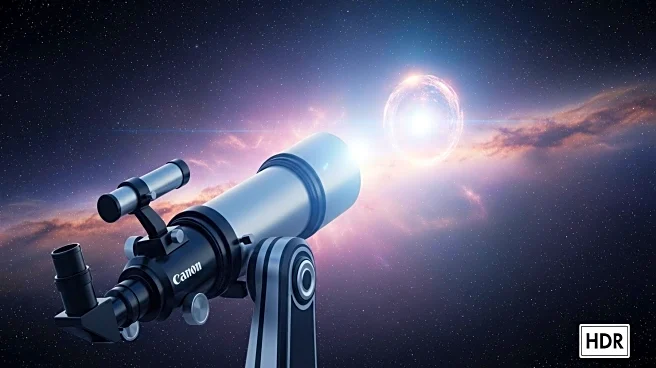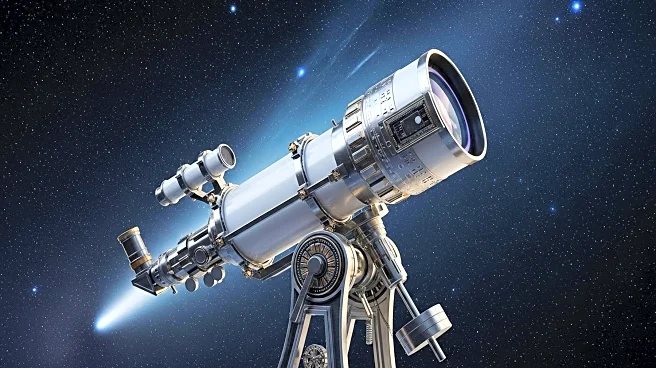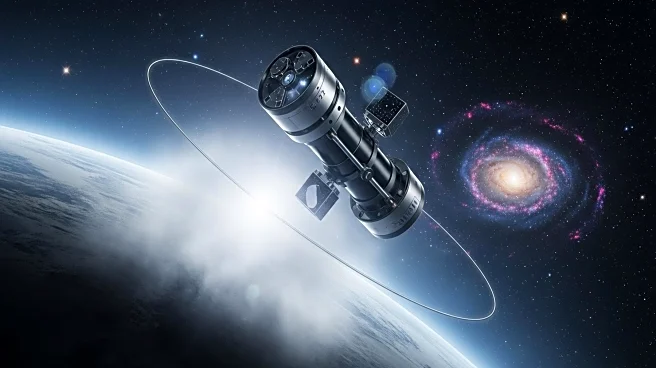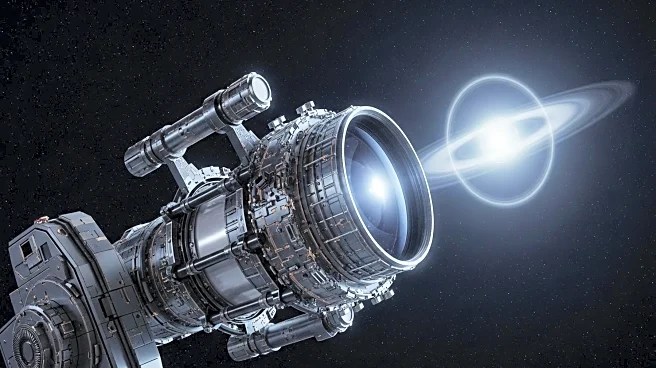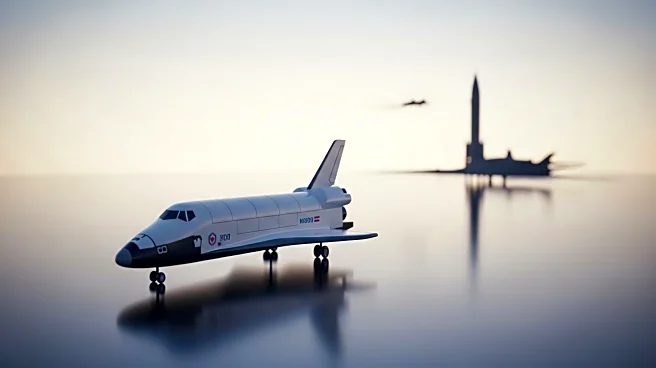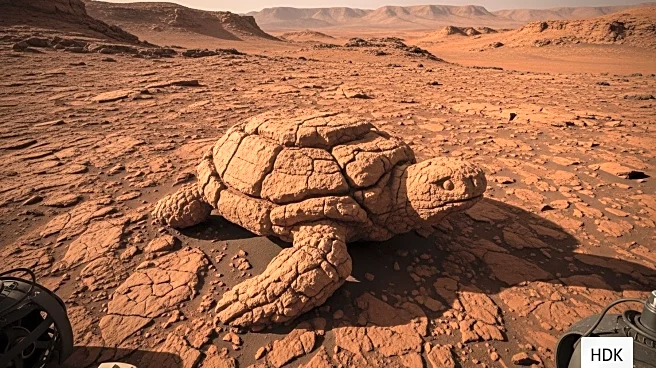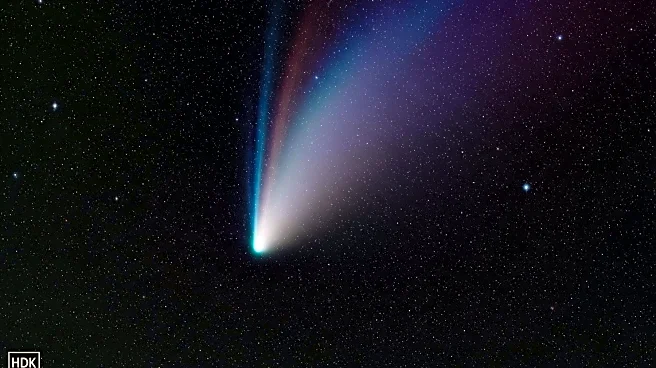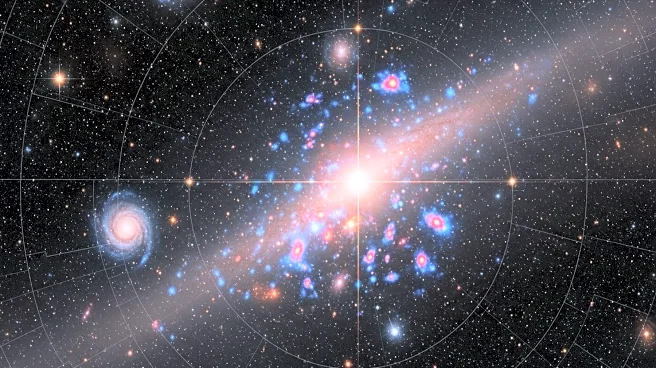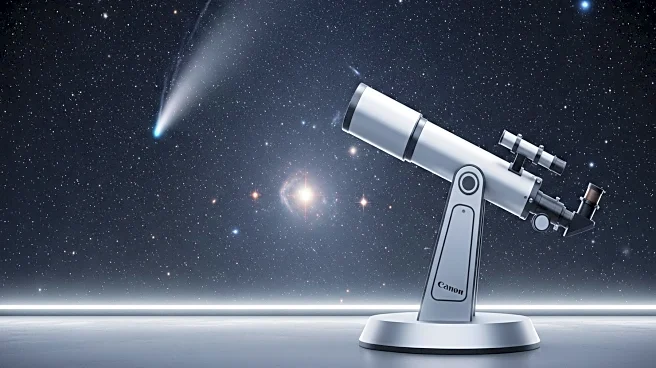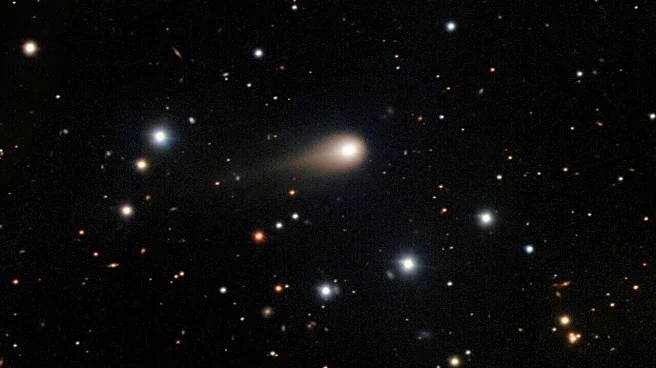What's Happening?
NASA's Hubble Telescope, along with SPHEREx, Transiting Exoplanet Survey Satellite (TESS), and James Webb Space Telescope, has been observing a mysterious interstellar object named 3I/ATLAS. This object, first detected in early July, is only the third of its kind observed from beyond the solar system. While initially classified as a comet, 3I/ATLAS exhibits unique features that challenge typical cometary characteristics. Notably, it has a teardrop-shaped cocoon of dust without a distinct cometary tail, as revealed by Hubble. SPHEREx and James Webb have detected an unusually high carbon dioxide to water ratio in its coma, the highest ever observed in a comet. TESS data shows the object was active and bright at a distance from the Sun where most comets are inactive. These findings suggest that 3I/ATLAS may have been exposed to higher radiation levels or formed near the CO2 ice line in its parent protoplanetary disk.
Why It's Important?
The study of 3I/ATLAS is significant as it provides insights into the nature of interstellar objects and challenges existing cometary models. The unusual characteristics of 3I/ATLAS could lead to new understandings of comet formation and behavior, potentially impacting theories about the solar system's formation and the conditions in other planetary systems. The high carbon dioxide levels and activity at a great distance from the Sun suggest that this object may have originated from a different environment than typical solar system comets. This research could influence future space exploration missions and the search for extraterrestrial life, as understanding the composition and behavior of such objects may reveal more about the universe's diversity.
What's Next?
As 3I/ATLAS continues its journey through the solar system, it will make close flybys of Jupiter, Mars, and Venus. Harvard astronomer Avi Loeb has proposed that NASA's Mars Reconnaissance Orbiter should observe the object as it approaches Mars. Additionally, NASA's Juno probe may intercept 3I/ATLAS near Jupiter, potentially providing further data on its peculiar nature. These observations could offer more detailed insights into the object's composition and origins, contributing to the broader understanding of interstellar phenomena.
Beyond the Headlines
The study of 3I/ATLAS raises questions about the potential for extraterrestrial civilizations, as suggested by Avi Loeb. While this idea remains speculative, the object's unique characteristics prompt discussions about the diversity of cosmic phenomena and the possibility of unknown processes in the universe. The research also highlights the importance of international collaboration in space exploration, as scientists from various countries contribute to understanding these rare interstellar visitors.
